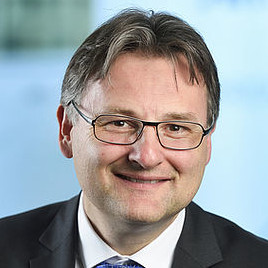Plenary Speakers

Plenary Speakers

Mazen Alamir
University of Grenoble
France
Tango steps in a moving-window cabaret!
In this talk, various formulations and tools are revisited and mixed in order to accommodate for different challenges arising in nowadays Nonlinear Model Predictive Control (NMPC) and Moving-Horizon Estimation (MHE). The past and undergoing considered tracks involve various ingredients such as probabilistic certification, Machine-Learning, GPU-parallel computation as well as non conventional formulations of NMPC and MHE.
While each of the visited tracks might become obsolete sooner than expected or desired, the overall message is hopefully sustainable in the medium term: our community need to be, more than ever, opened to new opportunities and tools while building upon a carefully selected set of our solid foundations.

Ruzena Bajcsy
UC Berkeley
United States
Anticipating and Predictive behavior
During the last 20 years there has been increased interest in estimating the INTENT of the Human motion (as part of human action)during the man-machine interaction. The main motivation has been to prepare the robot to act safely and being as helpful as possible during their interaction with the Human.
While the Control community has had predictive control formulation (the literature on this topic is quite rich,see references [16-18]) unfortunately this formulation is based on the assumption that one has the knowledge of the dynamics of the system. This of course is not the case for human. As we all know humans are many times unpredictable. However during the last 20 years thanks to brain imaging techniques, such as MRI.FMRI,EEG and more ,the neuroscientists, the psychologists, cognitive scientists have identified unconscious signals in the cortex that are precursors to humans in their motion planning. We have reviewed a selected list of those articles and in our full talk will give the essence of these papers[1-15]. One fundamental observation we can already make is that while during 20th century the prevalent modus operandi both for behavioral psychologists and roboticists was the stimulus-response, perception-action cycle, the 21st century hypothesis is combination of feedforward and feedback, action –perception, hence the anticipatory behavior in addition reactive behavior.

Moritz Diehl
University of Freiburg
Germany
Numerical methods for NMPC for systems with state dependent jumps and discrete actuators
This talk presents recently developed methods for non-standard NMPC problems which cannot directly be formulated and solved in the form of smooth nonlinear programs (NLP).
- NMPC with state dependent discontinuities, and homotopy based active set solution methods tailored to mathematical programs with complementarity constraints (MPCC).
- NMPC with state dependent jumps, and their reformulation to case 1) via “time freezing”.
- NMPC with discrete actuators, and a Gauss-Newton inspired heuristic.
Throughout the talk, the focus will be on the exploitation of convex structure in these strongly non-convex problems The algorithms and methods will be illustrated by tutorial and some real-world examples.
The talk presents joint work with Armin Nurkanovic, Sebastian Albrecht, Jonas Hall, Florian Messerer, Sebastian Sager, Clemens Zeile, and Adrian Bürger.

Alexander Domahidi
Embotech AG
Switzerland
Transferring Embedded (N)MPC into a Technology: Successes, Challenges, and Open Questions
With Nonlinear Model Predictive Control being well understood from a theoretical perspective, there has been tremendous progress in the last decade towards transferring the approach to real implementations on resource constrained, embedded systems. In this talk, I will highlight some successful applications in the area of Autonomous Driving, Space, and Robotics. Unlike many other control methodologies, the ultimate proliferation of NMPC into a wide range of applications critically relies on the availability of standardized software. To this end, I will present some challenges in developing reliable NMPC software and the impact on industry adoption.

John Bagterp Jørgensen
Technical University of Denmark
Denmark
Nonlinear Model Predictive Control based on Stochastic Differential Equation Models
Nonlinear Model Predictive Control (NMPC) based on stochastic differential equation (SDE) models offers a systematic method for implementation of NMPC. We demonstrate how the filtering and prediction with SDE models can be used for experimental design (input design), parameter estimation and system identification as well as monitoring and fault detection. Also, we address the importance of disturbance modelling for SDE systems and provide a potential based approach inspired by barrier functions. Efficient numerical procedures for the optimal control problem (OCP) based on the SDE-based identified filtering and prediction model are described. High performance scientific computing is used for uncertainty quantification of the closed-loop system. We illustrate the methods using a number of examples from reactive systems as they arise in chemical engineering, biotechnology, biomedicine, and energy systems. The range and broadness of these systems demonstrates the power of a uniform system approach based on merging systems and control, high-performance scientific computing, and chemical engineering science.

Andreas Kugi
TU Wien
Austria
Nonlinear Model Predictive Control: How Important is the Model?
Nonlinear model predictive control (NMPC) has established as a standard tool in many different industrial applications ranging from process control solutions in metal production, pumped-storage power plants, high-performance electric and hydraulic drives to power electronics systems, with sampling times from minutes to a few microseconds. Clearly, the steady increase in computational power and the advances in the theoretical concepts have paved the way for the general acceptance and versatility of NMPC and this is expected to continue also in the future. Most of the more theoretically oriented works in the literature deal with the important topics of how to formulate and solve the underlying optimization problem and how to prove stability and convergence properties. In many of our industrial applications, we found out that the design of an appropriate mathematical model is an essential requirement for the success of an NMPC strategy. In this talk, we will focus on the interplay between mathematical modelling and NMPC. Based on different industrial examples, we will demonstrate how a tailored modelling approach can help to reduce the computational costs and improve the overall performance of NMPC applications.

Ruth Misener
Imperial College London
United Kingdom
Numerical approaches to mixed-integer nonlinear optimization
This presentation discusses state-of-the-art in mixed-integer nonlinear optimization (MINLP) solver software. We focus on some recent advances in exploiting special mathematical structure for solving MINLP.

Melanie Zeilinger
ETH Zurich
Switzerland
The Role of Learning in MPC and Vice Versa
While the potential of learning-based control paradigms is being demonstrated in numerous applications, the supporting theory addressing questions related to their safety, reliability, performance or also their computational properties is still in its infancy.
Model predictive control offers a promising framework to approach this problem. It directly facilitates online learning to improve the description of any problem component, i.e. the model, cost or constraints, with the goal of enhancing closed-loop performance. Despite the opportunities, however, the MPC approach is often challenged by complex and long-term tasks. In this talk, I will discuss different flavours of learning-based MPC as well as tools for their analysis, and also address how MPC principles can be used to enrich the theoretical properties of other learning-based control techniques. Throughout the talk, the ideas will be highlighted using demonstrations of autonomous vehicles and robotics.